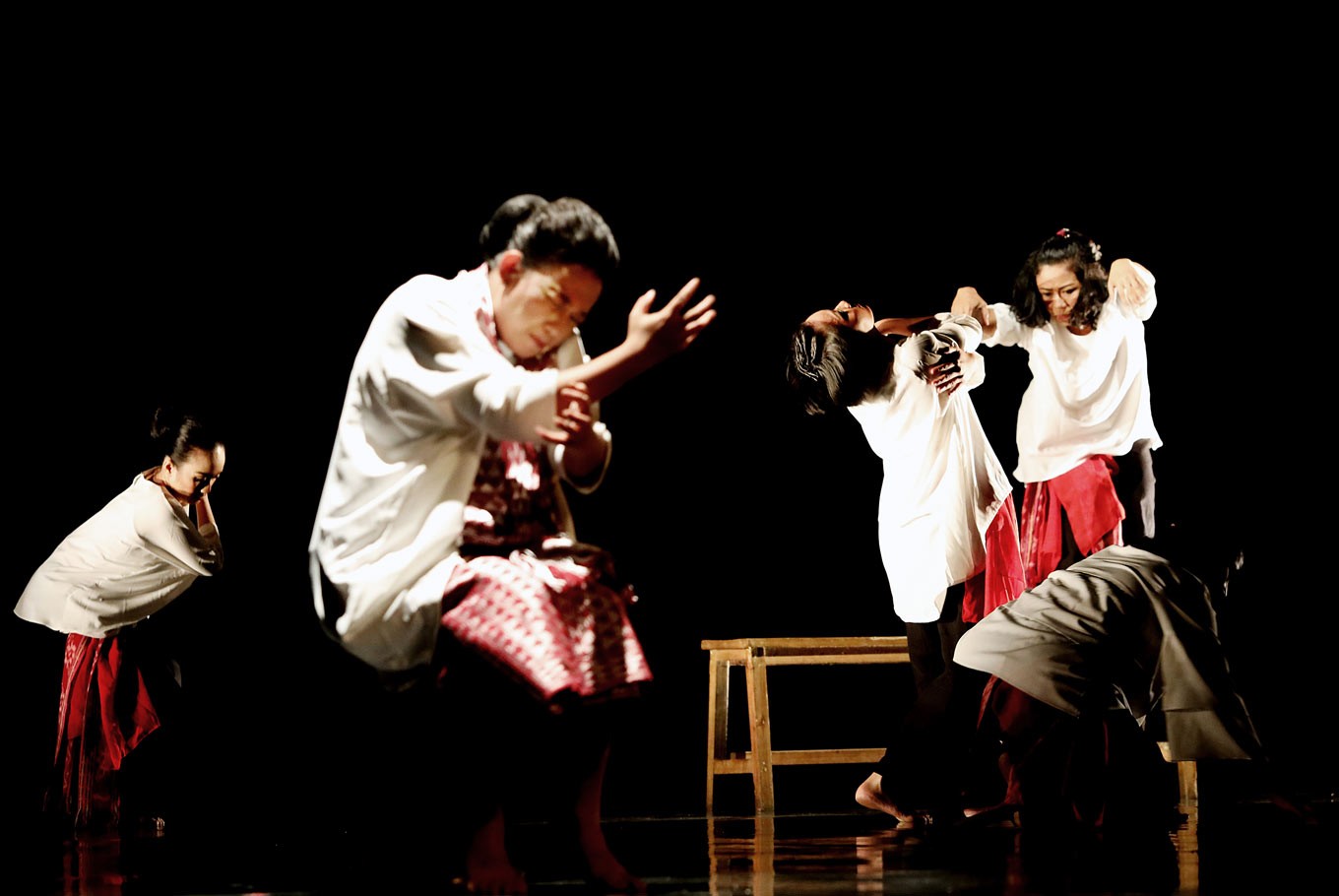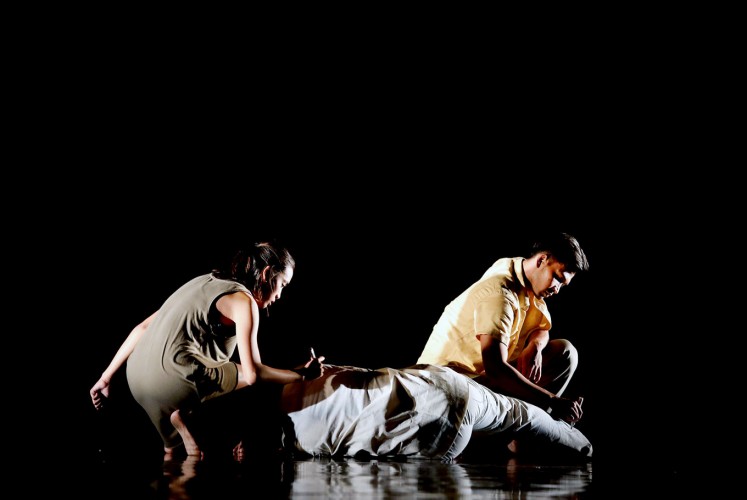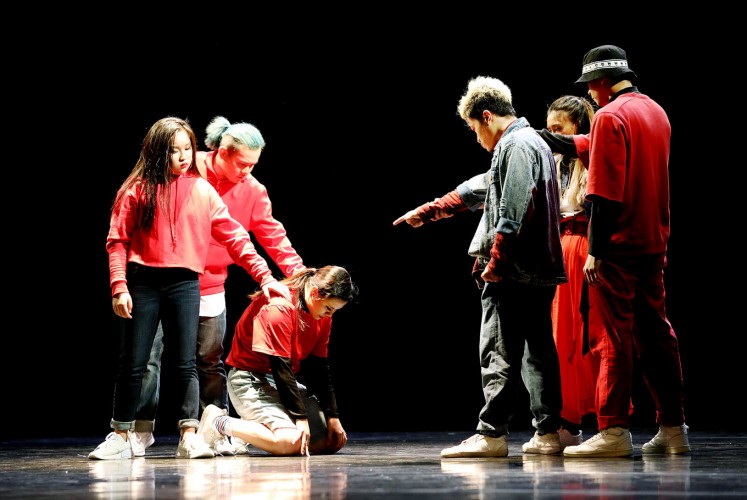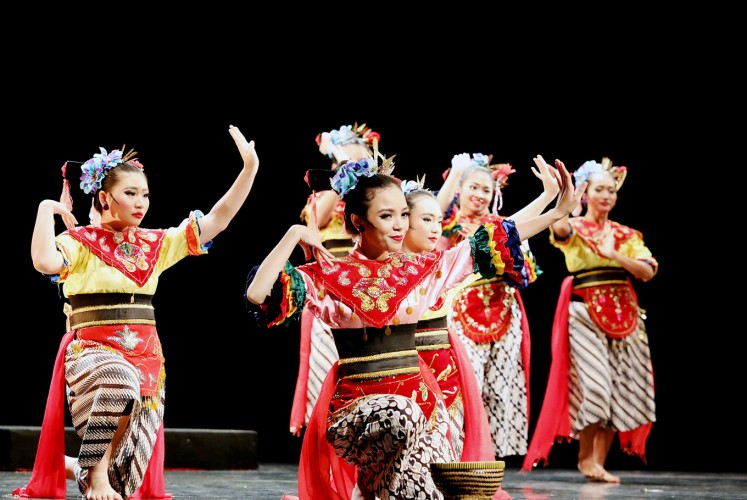Popular Reads
Top Results
Can't find what you're looking for?
View all search resultsPopular Reads
Top Results
Can't find what you're looking for?
View all search results'Jakarta Dance Meet Up' telling stories on stage
Change text size
Gift Premium Articles
to Anyone
W
ith “Various, actual and personal” as its theme, dance troupes from various backgrounds enlivened the third edition of Jakarta Dance Meet Up (JDMU).
Following the success of the first two editions, which were held at the beginning and in the middle of this year, the third edition of the JDMU aimed at being an inspirational platform that embraced dance communities in Jakarta.
“For the Jakarta Art Council, dance communities, dance studios, informal dance schools, or small groups of any genre of dance all have strategic positions to continue to grow the spirit of art dance,” Rusdy Rukmarata, a representative of the Jakarta Art Council (DKJ), said in a statement.
For nearly two hours, the audience of hundreds were wowed by the vibrant performances of the Alisa Soelaeman Dance Project (ASDP), Dance Melayu Bangka Belitung (DMB), Indonesian Dance Theater, Kelompok Insan Pemerhati Seni (KIPAS) and Sanggar Tari Paduraksa Tebet at Gedung Kesenian Jakarta, Central Jakarta, on Oct 26.
A theatrical dance titled “What We Are Talking About” by choreographer Alisa Soelaeman opened the show. Sensual in its subtlety, a couple of dancers performed using body language, dancing in a love story presented through contemporary ballet and classic dance.
As the soft music played, another dancer, who was standing in the corner recited a poem for the couple.
Next on stage was Sanggar Tari Paduraksa Tebet. Under the choreography of Dwi Yuliyaningrum, they presented two dances in a row — Mambrak Pendaringan, which told about Betawi children dancing in a rice field while waiting for the harvest, and Buja dari Tanah Madura (Salt from the Land of Madura), which recounted a story about salt farmers who joyfully harvest their product.
A theatrical dance titled Anna (Mother) by Yosep Prihantoro highlighted a story of gender stereotypes in Ambonese culture, where women are still considered to be weak. All the female dancers, while moving in a gentle and delicate manner, showed the leadership side of themselves and tried to break the stereotypes labeled on them. Putting out two different genres of dance, Indonesian Dance Theater performed a theatrical dance titled A Walk at Pedestrian and Input, Process, Output.
Work in progress: Members of the Indonesian Dance Theater troupe perform Input, Process, Output from choreographer Febyanna Serafine. The performance tells the creation of dance itself. (DKJ/File)The last show was presented by the DMB, which performed another theatrical dance inspired by natural damage caused by tin-mining activities in Bangka Belitung province. In a choreography titled Asa by Popo Julihartopo, one female and male dancer mixed both supple and smooth movements accompanied by traditional stringed instruments from Bangka Belitung. Dust scattered around their bodies represented the aridity of the land.
In the dance, the female dancer symbolized the land, while the male dancer symbolized the air — two elements that are directly affected by the tin-mining activities.
Feel the groove: A group of dancers from Sanggar Tari Paduraksa Tebet performs on stage during the third installation of Jakarta Dance Meet Up in October. (DKJ/File)The third edition of the JDMU wrapped up the series for 2017. This event will be conducted regularly in the upcoming years because there are still many dance communities that have been registered but have not yet had the chance to get on stage.
“We aim to provide a platform for all dance communities around Jakarta to express their works,” Hartati, the head of the DKJ dance committee, said.
***
The writer is an intern at The Jakarta Post.














